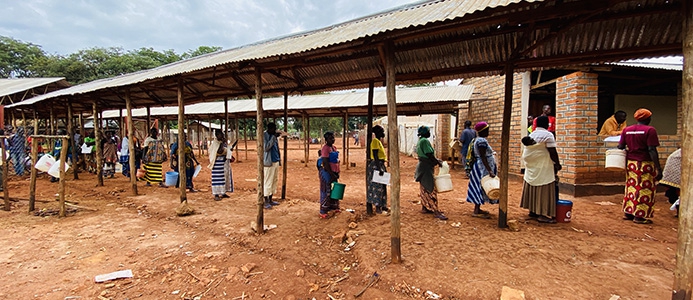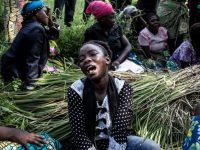Khartoum suffers from a fierce war between the Rapid Support Forces and the Sudanese army,…

Ethiopia, Humanitarian Aid Reaches Only a Few Cities in Tigray
The UN OCHA report published on 13 march 2021, highlighted the humanitarian problems and issues in Tigray.
The situation regarding humanitarian access is in continuous evolution. Despite recent improvements in access, this week the active conflict in several areas limited humanitarian response.
In addition to the insecurity in which the humanitarian partners operate, they also report insufficient resources (basic necessities, water, food, basic medicines, etc.) for all the people that currently need treatment and support in Tigray.
Security permitting, Humanitarian assistance operators are using all the capacity available to expand their support in order to reach rural areas in Tigray that have not been provided with assistance yet.
The Ethiopian government is trying to reach six districts (Chila, Rama, Ahsea, Egela, Adet and Hahayle – about 300,000 people), that have not received food aid.
Women and girls continue to fall victim to abuse and rape.
From the data that is continuously updated, the number of people in need of assistance, medical treatment and support since the beginning of the war has reached 950,000 and 62,225 refugees have fled to Sudan.
The report goes on to say that:
– last week, humanitarian operators noticed an improvement, however small, but in the past few days it declined again becoming more critical and due to the widespread insecurity, it limited the capacity of operators to move around the area in order to provide assistance.
– the conflict is still active and there have been reports about attacks against clearly marked humanitarian organization vehicles by unidentified armed groups.
– The United Nations Department of Security and safety, OCHA and the Logistics Cluster in Mekelle are developing an operative plan: the overall objective is to mitigate the impact of future disruptions on lifesaving humanitarian operations.
The exact number of displaced persons due to the conflict in Tigray is not definitely known but according to the Regional Bureau of Labour and Social Affairs (BOLSA), as of March 27 there is an estimated 1.7 million displaced people in the region.
Despite the 186 UN humanitarian staff members, over 1,500 international operators and national NGOs, the regional insecurity in Tigray has gotten worse, specifically because the conflict broke out during the harvest.
A recent report published by the World Peace Foundation (WPF) warns of famine in the near future considering that the rainy season is approaching.
The World Food Programme (WFP) has begun providing food assistance asking for 170 million dollars to respond to food requirements for the next six months, yet this will not be enough to satisfy the needs of the entire population.
These conclusions are based on partial data reported on only 50/60% of the population and many of them have only been provided with food once or twice over four months.
One of the humanitarian partners, Shelter Cluster, reported limitations on logistics and an estimated response gap of 64%.
Even though access to water in Shire was restored and is being brought in by trucks as reported by MSF and other partners, the quality of the water is not high and there is the risk of disease outbreaks in the upcoming rainy season.
In the western zone, the Amhara regional government has distributed aid and food supplies, but unfortunately local officials have reported that the supplies are inadequate and have not reached all those in need.
Since October 2020, the water supply system has not worked due to electric power outages and the lack of fuel. Residents and displaced people have been using water from unprotected sources for drinking and other uses.
The only solution to the problem was the one-off provision of 32,000 liters of fuel by CARE Ethiopia in Maykadra and a limited supply by WASH NFI with the support of the Regional Water Bureau and UNICEF
Girls and women walk for almost three hours there and back to find water in complete insecurity and with the risk of rape (rape as a weapon of war – reported by witnesses and trusted international and neutral sources Ed.)
The Tigray Bureau of Agriculture (TBoA) estimates that the locusts in the desert have destroyed 25% of the crops on around 120,300 hectares of land in the four zones (south, south-east. West and central) striking about 122,000 families.
Even the spring 2021 season was insufficient in three zones (east, south-east and south) and involved at least 26,000 hectares of land and around 70,000 families.
The ongoing conflict in Tigray struck all six zones (south, south-east, east, north-west, west and central) during the harvest leaving the areas hit by the war without food supplies, seeds, income and in most cases livestock for sales or agricultural activities (hunger as a weapon of war – various sources report almost daily about burned fields, livestock killed by the forces occupying Tigray, ENDF, and allied Amhara and Eritrean troops Ed.)
Prior information indicates that markets are only open in the big cities (much like the reception centers for displaced persons and hospitals. Ed.) located along the main roads. It is estimated that the conflict has hit about 1.118 million families. It’s very probable that communities will lose their main agricultural production season (June-November 2021)and risk further food safety deterioration.
Access to feed for livestock is a huge challenge because the main sources for feed/pasture were in the western and southern zones. Export of meat, especially in southern Tigray, were interrupted. Furthermore, the capacity to manage strains of animal diseases (PPR, SG and LSD) is limited. Eighty percent of the veterinary clinics have been destroyed or looted. There is an urgent need for animal health services, vaccines in particular, to contain the current strains of disease.
On the basis of this, Tigray is at risk of balkanization especially because international players, as can also be seen by the diaspora, continue to ask the Ethiopian government and prime Minister Abiy Ahmed three simple and basic points to carry out in order to quell the crisis in Tigray:
– humanitarian organizations must be able to operate in complete safety and must be able to reach all those in need in the Tigray region;
– the Eritrean troops must withdraw from Tigray;
– independent inquiries must be carried out to investigate, refute and bring to light war crimes against humanity in order to bring those responsible to justice.
Although there have been official communications and statements, these demands have not been put into play yet in practical and incisive terms.




